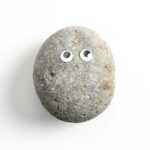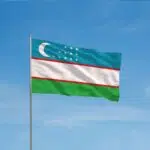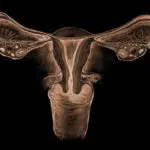Bring in the (Australian) spring by celebrating Wattle Day, held annually on September 1. This day heralds the start of the spring season in Australia, a season when the ‘acacia’ species (commonly known as the wattle in Australia) sprouts flowers in abundance. This was not the original purpose of this day, however. Wattle Day was intended to promote and enhance patriotism in the then-new nation of Australia.
History of Wattle Day
The origins of Wattle Day can be traced back to Tasmania when the first Hobart Town Anniversary Regatta was held in the 1800s. The island was celebrating the anniversary of its discovery by the Dutch, and they initiated a procession under an arch decorated with wattle blossoms. They even suggested the audience wear a sprig of silver wattle blossom in future regattas. This was switched out with the black wattle — more commonly grown during the month of the celebration — and this custom continued till at least 1883.
Even literature and poetry honored the wattle from the 1860s to the early 1900s, and people participated in wattle waltzes and drank wattle beer. There was a push for Australia to recognize the wattle as the national flower during this period, which was further compounded by the establishment of the ‘Wattle Club’ in Victoria. Founded by Archibald James Campbell, an ornithologist, and field naturalist who was passionate about Australian wattles, this club organized special outings especially during September for wattle appreciation. He was also one of the first people to mention the creation of a special day to celebrate Australia’s most famous flower. This interest only increased in the years following this war, and continued till the 1930s, after which disinterest set in.
About 50 years later, green and gold were declared Australia’s national colors, and the interest in wattles grew again. Soon, the push for creating a special day to celebrate the wattle grew again, and a Wattle Day League was formed in 1910. Headed by Sydney Botanic Gardens director, J. H. Maiden, this league was headquartered in Sydney and aimed to present a unified proposal to various state governments for the creation of a Wattle Day. The league settled on September 1 as Wattle Day — as it is the beginning of the spring season in Australia — and they founded multiple branches across the country. Since that year, celebrations have been held each year in major Australian cities. The dates of this celebration were different — cities chose dates between July and September. The celebration kept growing, however.
Support for Wattle Day continued even during the First World War when wattle sprigs were sold to raise money for organizations like the Red Cross. As a tradition, pressed wattles were sent in letters to wounded soldiers. In 1982, environmentalist Maria Hitchcock — famously known as ‘The Wattle Lady’ — started a campaign to revive Wattle Day and have it gazetted. She also planned to formally get recognition of the Acacia pycnantha as Australia’s National Floral Emblem. She took the help of ABC’s Ian McNamara to solicit letters of support from hundreds of Australians. After the official ceremony to gazette the Floral Emblem, Ms. Hitchcock was told she would have to personally get letters of approval from all the Premiers and Chief Ministers in Australia. Soliciting Ian McNamara’s help again, she received approval letters within three years for the gazettal of Wattle Day.
From 1992, September 1 has been declared as National Wattle Day for Australia and the external Territories of Australia.
Wattle Day timeline
Ornithologist and field naturalist Archibald James Campbell makes a speech where he asks for the creation of a special Wattle Day.
Environmentalist Maria Hitchcock starts a campaign to get official recognition for wattles — both as Australia's National Floral Emblem and as a special holiday.
Australia's governor-general designates the golden wattle as the country's national flower.
September 1 is officially proclaimed as Wattle Day by Bill Hayden, the governor-general of the Commonwealth of Australia, and it is celebrated all across Australia.
Historian Lilly Robin publishes a paper titled ‘Nationalising Nature: Wattle Days in Australia,’ that examines the history and significance of Wattle Day to Australia's socio-economic landscape.
Wattle Day FAQs
What date is Wattle Day in NSW?
In 1916, New South Wales changed the date of their Wattle Day celebrations to August 1. They used the earlier flowering (and more familiar) Cootamundra wattle rather than the golden wattle. Now, Wattle Day is officially celebrated across Australia on September 1.
What does the wattle symbolize?
The resilient wattle species is said to represent the resilience of the Australian people. The golden wattle also symbolizes remembrance and reflection.
What is wattle used for?
Wattle plants have a wide variety of uses and have been a source of wood, food, fodder for animals, medicines, perfumes, and even oils.
How To Celebrate Wattle Day
Light up your house in wattle colors
Do as the Australians do and light up your house in wattle colors — green and yellow. Light a few yellow lamps, string up yellow-colored fairy lights, and add a plant or two for that green pop.
Research conservation opportunities
Wattle Day used to be about patriotism, but it has evolved to address conservation too. Take a minute to learn what you can do for the environment and plants around you, and start making small changes for a better planet. Encourage others to take up the conservation cause too.
Enjoy nature
Wattle Day celebrations are often low-key and involve appreciating nature. Take a quick walk in the park, have lunch outdoors while basking in the sun, go on a trek, or plant a tree in the backyard.
5 Fun Facts About The Wattle
The name is an early colonial term
Acacias are called wattles in Australia because they believed the stem of this plant was used to make wattles (a.k.a. interlaced rods) in early huts.
It’s incorrect on the Coat of Arms
The sprig of the wattle on the official symbol of the Commonwealth of Australia is botanically incorrect, the spherical flowers and green leaves are not an accurate picture of the plant.
This plant is resilient
It can withstand droughts, winds, and bushfires too.
The wattle is also a weed
In South Africa, Tanzania, Italy, Portugal, Sardinia, India, Indonesia, and New Zealand, this plant is considered a weed.
Mentioned in the cricket team's victory song
The lyrics of the official victory song for the Australian cricket team are, “Under the Southern Cross I stand, a sprig of wattle in my hand, a native of my native land, Australia you beauty!”
We're celebrating spring
We're celebrating spring
Beauty, new life, bounty, optimism, color — spring embodies all these things and more to people around the globe. Wattle Day encourages us to look forward to this season and celebrate it with a lot of enthusiasm.
There is a strong environmental connection
Wattle Day honors a species of flora so, naturally, this means by celebrating this day, we nurture a love for nature. Plus, we are growing our environmental knowledge and are (hopefully) becoming budding conservationists.
We enjoy simple and sentimental celebrations
The USP of this day includes low-key and simple celebrations in many Australian households. We love to wine and dine ourselves, but a small event is just as fun and, sometimes, it is even more intimate and personal.
Wattle Day dates
| Year | Date | Day |
|---|---|---|
| 2024 | September 1 | Sunday |
| 2025 | September 1 | Monday |
| 2026 | September 1 | Tuesday |
| 2027 | September 1 | Wednesday |
| 2028 | September 1 | Friday |



























































































